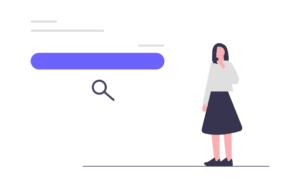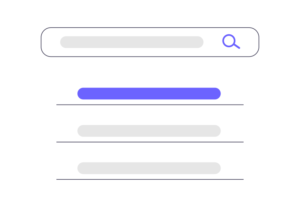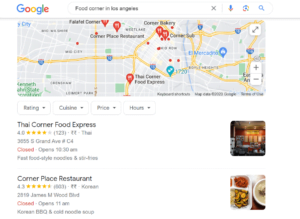When it comes to your website’s success, understanding the bounce rate is crucial. But what exactly is bounce rate, and why does it matter for SEO?
In this blog post, we will break down the concept of bounce rate and explore its impact on your website’s search engine optimization (SEO).
What is Bounce Rate?
Bounce rate is a measure that tells you how many people visit your website and then leave without exploring any other pages. It’s like someone entering a store and immediately walking out without looking around.
A high bounce rate means that a large portion of your visitors are not finding what they’re looking for or are not interested in your website. It suggests that something might be wrong, such as your website design, content, or relevance to the visitor’s needs.
Ideally, you want to keep your bounce rate low by providing a positive user experience that encourages visitors to stay and explore more of your website.
Why is Bounce Rate Important?
Bounce rate is important because it helps search engines like Google understand how useful and relevant your website is to people who visit it. If many visitors leave your website after viewing just one page, it suggests
Imagine you are planning a vacation and you search for “beach resorts in Goa India” on Google. The search results page shows a list of websites that offer information about beach resorts in Goa. You click on one of the websites that appear at the top of the search results.
Now, let’s say you land on the website and immediately realize that it’s outdated, difficult to navigate, and doesn’t provide the information you were looking for. Frustrated, you hit the back button and return to the search results to try another website. In this scenario, you’ve just contributed to that website’s bounce rate.
From Google’s perspective, a high bounce rate on that particular website signals that it might not be providing relevant or valuable information to users searching for beach resorts in Goa. As a result, Google might conclude that the website is not the best match for that search query and could lower its ranking in future search results.
On the other hand, if you land on a website that is well-designed, easy to navigate, and provides comprehensive information about beach resorts in Goa, you’re more likely to stay on the site, explore different pages, and potentially make a booking. This lower bounce rate suggests to Google that the website is relevant and useful, which can contribute to a higher ranking.
What is a Good Bounce Rate?
A Good bounce rate means that a smaller percentage of visitors are leaving your website after viewing only one page. It indicates that visitors are engaging with your content, exploring more pages, and spending more time on your website.
A good bounce rate is typically considered to be below 50%. However, it’s important to remember that what is considered good can vary depending on factors like the type of website and industry.
It’s also essential to keep an eye on your bounce rate over time and compare it to industry benchmarks or your own past performance. This helps you understand how well your website is engaging visitors and allows you to make necessary adjustments if needed.
How to Reduce Bounce Rate
There are a number of things you can do to reduce your website’s bounce rate. Here are a few tips:
- Make your website load faster: People don’t like waiting, so make sure your website loads quickly.
- Write interesting and helpful content: Create content that people find interesting and useful, so they want to stay and explore more.
- Make your website easy to use: Design your website so that it’s easy to navigate and understand. Make sure it works well on both computers and mobile devices.
- Use catchy and clear headlines: Grab people’s attention with headlines that make them want to keep reading.
- Use keywords that people are searching for: Use words and phrases in your content that people are likely to search for. This helps them find your website and stay longer.
- Link to other pages on your website: Include links within your content that lead to other pages on your website. This encourages people to click and explore more.
- Use attractive images and videos: Include visually appealing pictures and videos to make your website more interesting and engaging.
- Make your website mobile-friendly: Many people use their phones to browse the internet, so make sure your website looks good and works well on mobile devices.
- Simplify your website’s navigation: Make it easy for people to find what they’re looking for on your website. A clear and simple menu helps them stay and explore.
- Track your website’s performance: Use tools to see how people are using your website and where they might be leaving. This can help you make improvements to keep people on your site.
Conclusion
Bounce rate is an important metric that can affect your website’s ranking in search results. By following the tips above, you can reduce your website’s bounce rate and improve your chances of ranking higher in search results.
To check your bounce rate, use Google Analytics. It shows which pages have high or low bounce rates. This helps you make decisions and improve your content easily.







